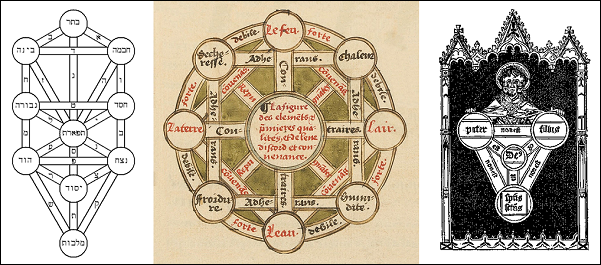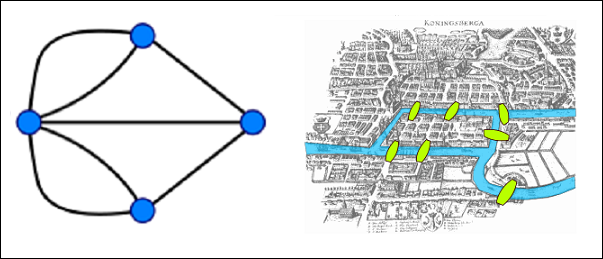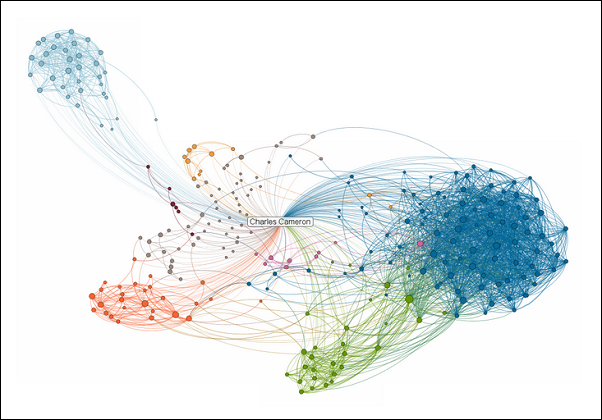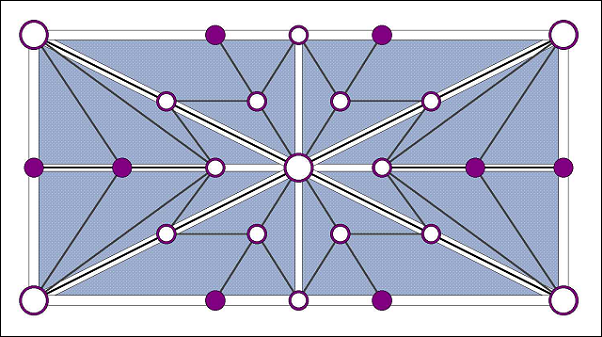On the felicities of graph-based game-board design: preliminaries
[ cross-posted from Zenpundit — on graph theory, and the background and history of HipBone / Sembl gameboards ]
.
First off, a graph — at least the way I’m using it here — is a diagram of linkages. The items linked, which may be people, places, phones, ideas, quantities, whatever, are represented by dots or circles, known as nodes, and the links between them by lines, known as edges.
Here’s a simple graph diagram with four nodes and seven edges:
That diagram represents — elegantly, with topological accuracy — the seven bridges connecting the banks and islands of the city of Königsberg — which gavs rise to a famous math problem, which in turn gave rise to that branch of mathematics we now know as Graph Theory.
Graphs are thus pictures of networks, and networks are the non-linear, feedback-capable basis for an astonishing variety of interesting things such as the internet and your and my brains…
And they can get pretty complex. I’m a simple soul, and not a great network maven — but here’s what my network in LinkedIn looks like as of today. It too is a graph, although it reminds me of broccoli, or of a fish…
Hey, that’s a pretty small network — and graph — compared with, say, a graph of all the neurons in a single brain, all the brains on the world’s computer networks, or all the neurons in all the brains on all the networks…
Graphs with concepts at the nodes and conceptual links along the edges have been used for centuries to convey mystical states, propositions in theology, and concepts in the natural sciences:

Left, the Sephirotic Tree in Kabbalah; middle, the four elements in Oronce Fine; right, the Christian Trinity
So you won’t be too surprised to learn that my variants on the Glass Bead Game of Hermann Hesse, which are designed to build what he termed the “hundred-gated cathedral of Mind” by analogically connecting the great thoughts of human-kind across all the arts and scences, use graphs (in this sense) as their boards…
Here, for instance, is one possible board design, derived from the inner vaulting of an English cathedral roof:
Okay, past is prelude.
In the second part of this post I’ll show you a series of boards actually used in HipBone / Sembl play, and then two dazzling works — one a work of art, the other a work of science — that leapt out at my in the course of my browsing a morning or two ago…




Leave a Reply
Want to join the discussion?Feel free to contribute!